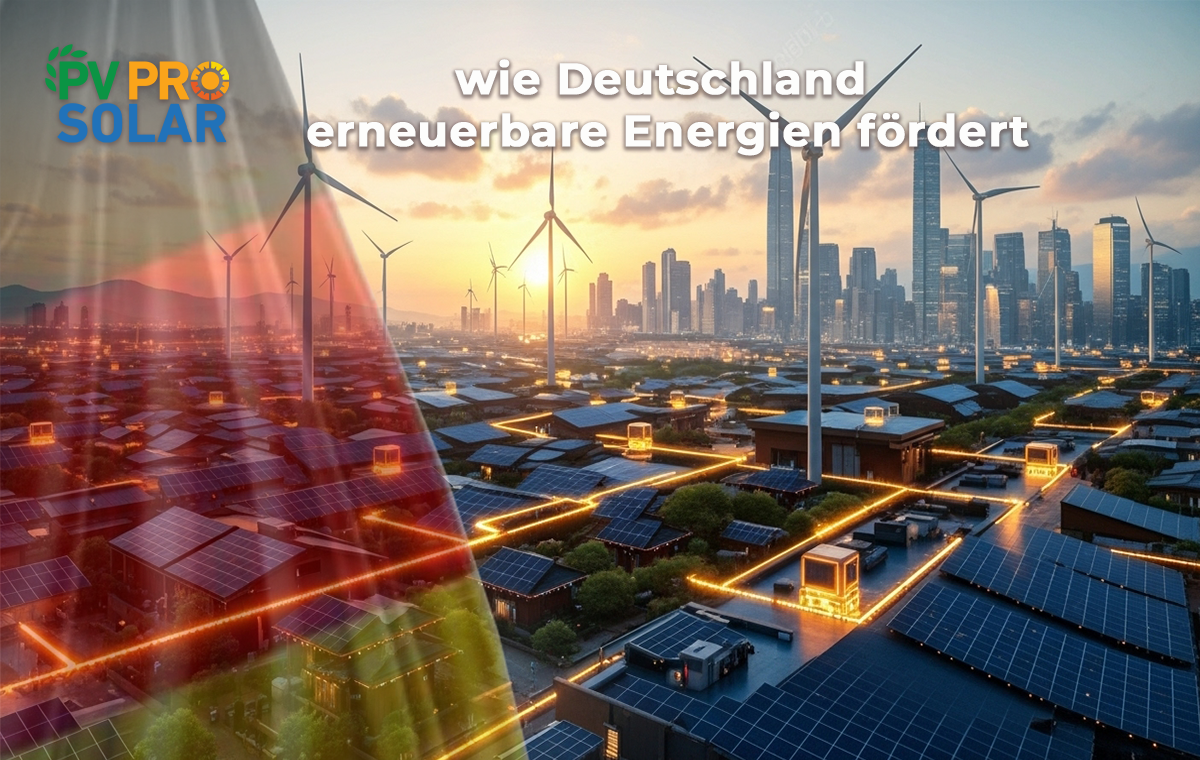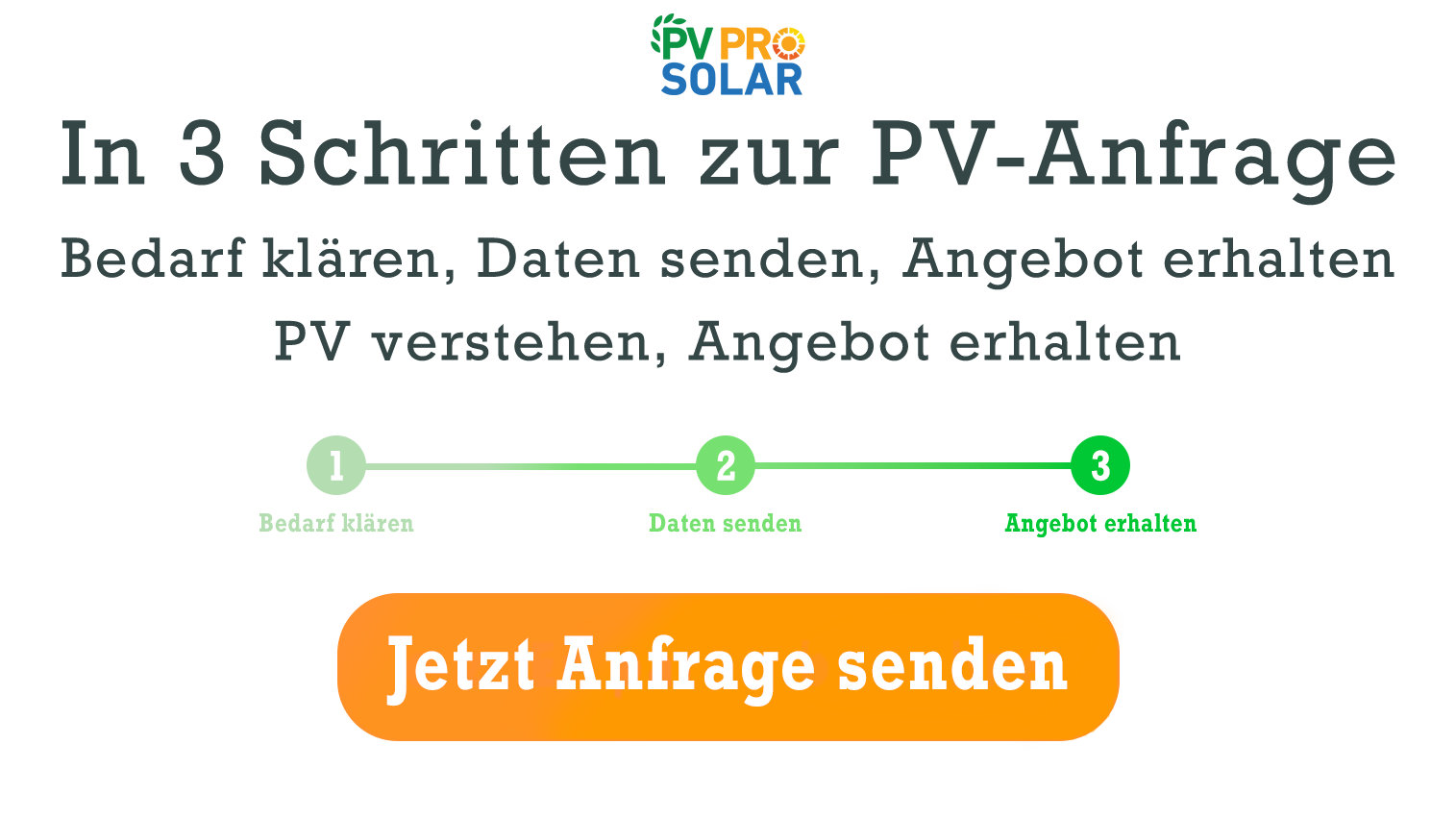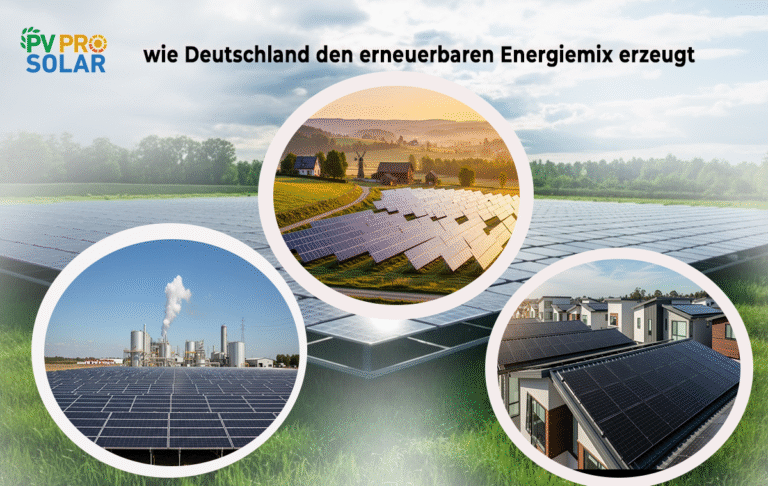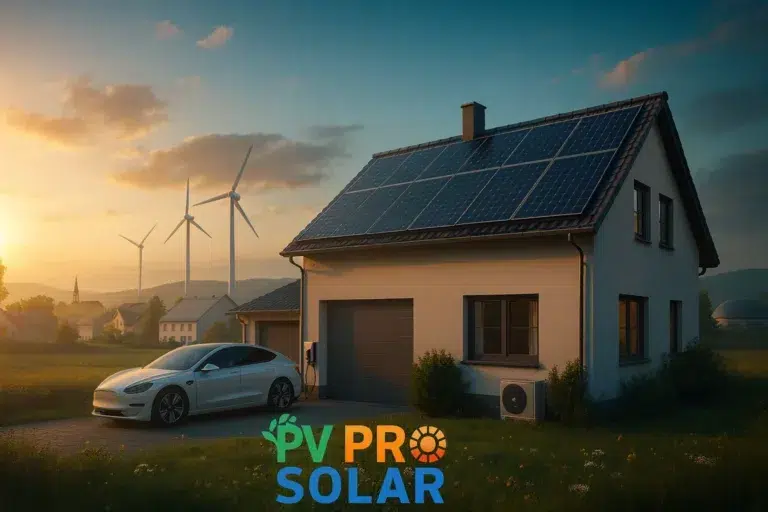How Germany Supports Renewable Energy – Programs, Laws, and Opportunities 2025
Germany is recognized as a global leader in renewable energy. For more than two decades, the federal government has been driving the expansion of solar, wind, biomass, and hydropower. But how does Germany support renewable energy in detail? Numerous programs, tax benefits, financial incentives, and legal frameworks make the transition to sustainable energy sources attractive for private households, companies, and municipalities. This article explains the measures in place, how they work, and the opportunities the future holds.
What goals does Germany pursue with the promotion of renewable energy?
The federal government has set clear climate goals. By 2045, Germany aims to be climate-neutral. By 2030, at least 80% of gross electricity consumption should come from renewable sources.
To achieve these goals, Germany follows three core strategies:
- Expansion of renewable electricity sources such as solar, wind, and hydropower.
- Promotion of storage solutions to ensure the security of supply.
- Decarbonization of industry, mobility, and heating.
These targets are driven not only by ecological considerations but also by economic ones. Expansion creates jobs, reduces dependency on energy imports, and strengthens the competitiveness of German companies.
What role does the Renewable Energy Sources Act (EEG) play?
The Renewable Energy Sources Act (EEG), introduced in 2000, remains the backbone of German energy policy.
Key mechanisms of the EEG:
- Feed-in tariff: Operators of solar or wind systems receive a guaranteed payment for electricity fed into the grid.
- Market premium model: New plants participate in auctions and sell electricity directly on the market.
- Grid expansion: Priority grid access for electricity from renewable sources.
The EEG has played a decisive role in enabling Germany to install more than 80 gigawatts of solar power capacity and over 60 gigawatts of wind capacity to date.
How does the feed-in tariff work in Germany?
The feed-in tariff guarantees operators a fixed payment per kilowatt hour for 20 years.
Current developments in 2025:
- New solar installations receive lower tariffs due to falling technology costs.
- Focus shifts to self-consumption combined with battery storage.
- Large projects are awarded through auctions, where the lowest bid wins.
Despite declining tariffs, investment in solar remains profitable as electricity prices rise and storage increases household independence.
What funding programs does KfW Bank offer for renewable energy?
KfW (Kreditanstalt für Wiederaufbau) is one of the most important funding institutions in Germany.
Relevant programs include:
- KfW Program 270 “Renewable Energies – Standard”: Low-interest loans for solar, wind, and biomass.
- KfW storage funding: Loans and repayment grants for battery systems.
- KfW Environmental Program: Support for companies to improve energy efficiency.
These programs allow households and businesses to invest at conditions well below market interest rates.
What government grants are available for solar systems?
In addition to loans, operators benefit from direct subsidies:
- Federal funding for efficient buildings (BEG): Grants for solar systems combined with heat pumps.
- Market Incentive Program (MAP): Subsidies for renewable heating solutions.
- Municipal programs: Many cities, such as Hanover, Bremen, or Wolfsburg, offer additional grants.
Example: In Lower Saxony, homeowners can apply for several hundred euros per kilowatt-peak when building new homes or renovating.
How does Germany support the expansion of battery storage?
Battery storage is a key technology for the energy transition. Germany supports them at multiple levels:
- KfW loans with repayment grants.
- Tax relief when combining solar systems with storage.
- Local subsidies, e.g., 500 to 1,000 euros per system in certain states.
The market is booming. In 2024, more than 800,000 home storage units were installed in Germany, and numbers continue to rise sharply.
What tax advantages exist for investing in renewable energy?
Since 2023, important tax benefits apply:
- VAT exemption for private solar systems up to 30 kWp.
- Simplified depreciation options for businesses.
- Tax-free feed-in tariffs for systems up to a certain size.
These measures significantly reduce investment costs and have accelerated demand.
What funding options exist for companies and industry?
Businesses benefit from specific programs:
- BAFA funding for energy efficiency in industry.
- Support for innovation projects within hydrogen strategies.
- Tax relief for energy-intensive companies.
Large production sites can reduce energy costs with their own solar or wind systems while meeting CO₂ targets.
What differences exist between funding for individuals and businesses?
- Individuals usually receive grants for solar systems, storage, and heat pumps.
- Businesses additionally benefit from innovation funding, tax breaks, and special programs for industrial projects.
What role do states and municipalities play in funding?
Federal states complement national programs with their own initiatives.
Examples:
- Lower Saxony: Grants for battery storage and charging infrastructure.
- Bremen: Subsidies for balcony solar systems.
- Bavaria: Grants for solar installations up to €2,000.
Municipalities also provide advisory services and local investment support.
How does Germany promote the expansion of wind energy?
Wind power is the most important renewable energy source in Germany.
- Auction procedures for new projects.
- Support for citizen-owned energy cooperatives.
- Funding for grid expansion.
The largest growth currently takes place in northern Germany, especially in Lower Saxony.
What support exists for biomass and biogas plants?
Biogas is subsidized under the EEG. Operators receive payments for feeding electricity and heat into the grid. Programs also exist for modernizing plants to improve efficiency and sustainability.
What role do hydrogen and Power-to-X technologies play?
Germany invests billions in developing a hydrogen economy.
- National Hydrogen Strategy since 2020.
- Subsidies for electrolyzers.
- EU Power-to-X programs.
Hydrogen is expected to decarbonize industry, mobility, and heating in the future.
How is e-mobility supported in connection with renewable energy?
E-mobility is heavily subsidized.
- Grants for wall boxes and charging infrastructure.
- Tax advantages for company cars.
- Combining solar panels with chargers is particularly attractive.
The trend clearly moves toward the self-consumption of solar power for charging electric cars.
What opportunities does the European Green Deal offer for Germany?
The EU Green Deal supports member states in expanding renewable energy. For Germany, this means additional funding and stricter targets that further accelerate the expansion.
What future trends are emerging in German renewable energy policy?
- Stronger promotion of storage and grid expansion.
- Digitalization of the energy sector.
- Expansion of the hydrogen economy.
- Support for sector coupling (electricity, heating, transport).
Germany supports renewable energy with a wide range of programs, laws, and financial incentives. From the EEG and KfW loans to tax benefits and municipal grants, the options are diverse. The combination of self-consumption, storage, and subsidies makes renewable energy in 2025 a worthwhile investment. Those who act now not only secure long-term savings but also make a decisive contribution to the energy transition.
Homeowners benefit from KfW loans, grants for storage, tax advantages, and the feed-in tariff.
Yes. Rising electricity prices and attractive subsidies keep profitability high. Storage and self-consumption further increase returns. What subsidies are currently available for solar systems in Germany?
Is investing in renewable energy still worthwhile despite declining feed-in tariffs?








